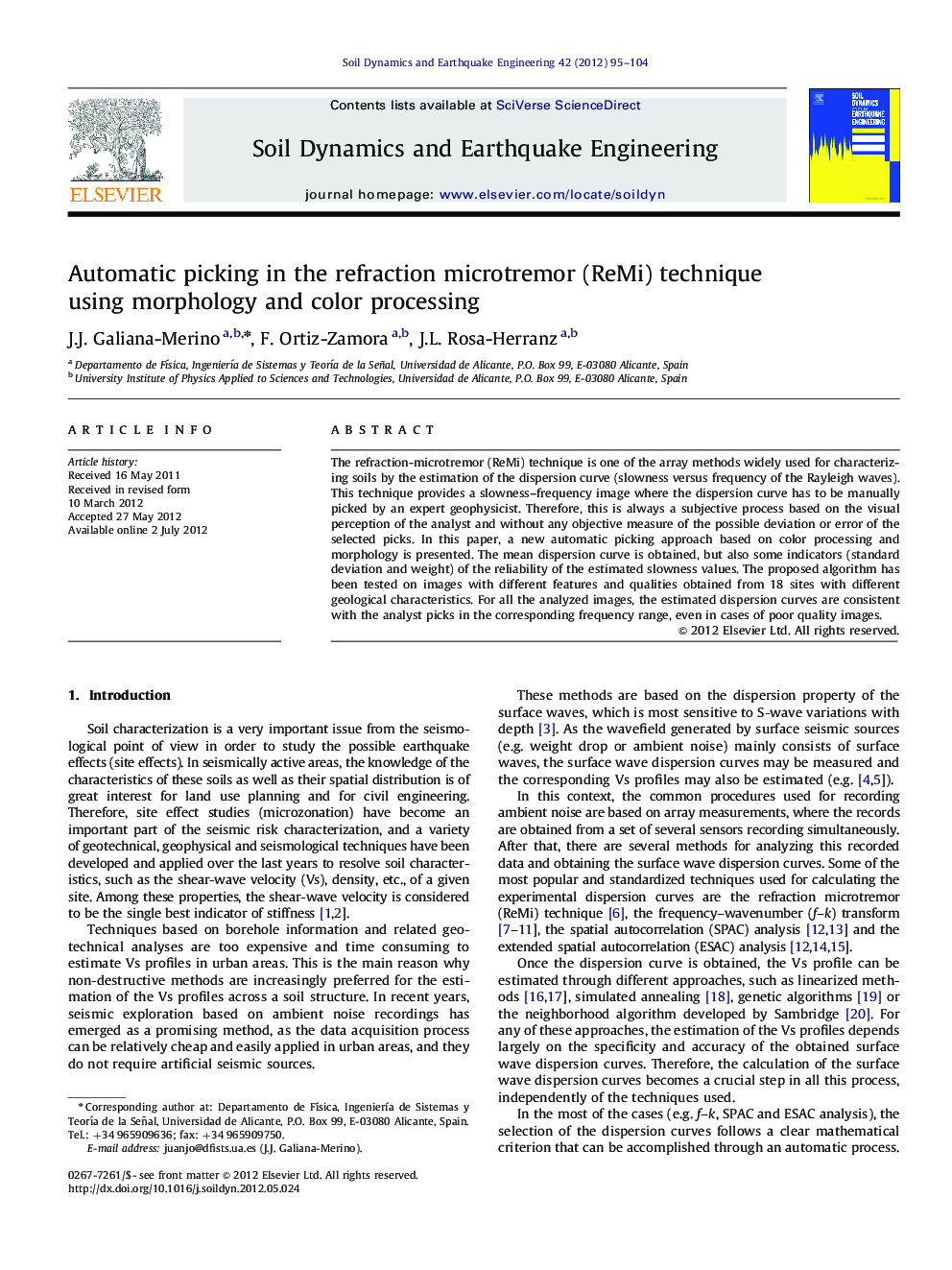| کد مقاله | کد نشریه | سال انتشار | مقاله انگلیسی | نسخه تمام متن |
|---|---|---|---|---|
| 304480 | 512808 | 2012 | 10 صفحه PDF | دانلود رایگان |

The refraction-microtremor (ReMi) technique is one of the array methods widely used for characterizing soils by the estimation of the dispersion curve (slowness versus frequency of the Rayleigh waves). This technique provides a slowness–frequency image where the dispersion curve has to be manually picked by an expert geophysicist. Therefore, this is always a subjective process based on the visual perception of the analyst and without any objective measure of the possible deviation or error of the selected picks. In this paper, a new automatic picking approach based on color processing and morphology is presented. The mean dispersion curve is obtained, but also some indicators (standard deviation and weight) of the reliability of the estimated slowness values. The proposed algorithm has been tested on images with different features and qualities obtained from 18 sites with different geological characteristics. For all the analyzed images, the estimated dispersion curves are consistent with the analyst picks in the corresponding frequency range, even in cases of poor quality images.
► Automatic estimation of the dispersion curve on the p-f images of ReMi.
► Method based on color processing and morphology.
► Proper results for all the analyzed images, even for the poor quality ones.
► Output: 4-column file with frequency, mean slowness, standard deviation and weight.
► Reliability of the estimated slowness values by the standard deviation and weight.
Journal: Soil Dynamics and Earthquake Engineering - Volume 42, November 2012, Pages 95–104